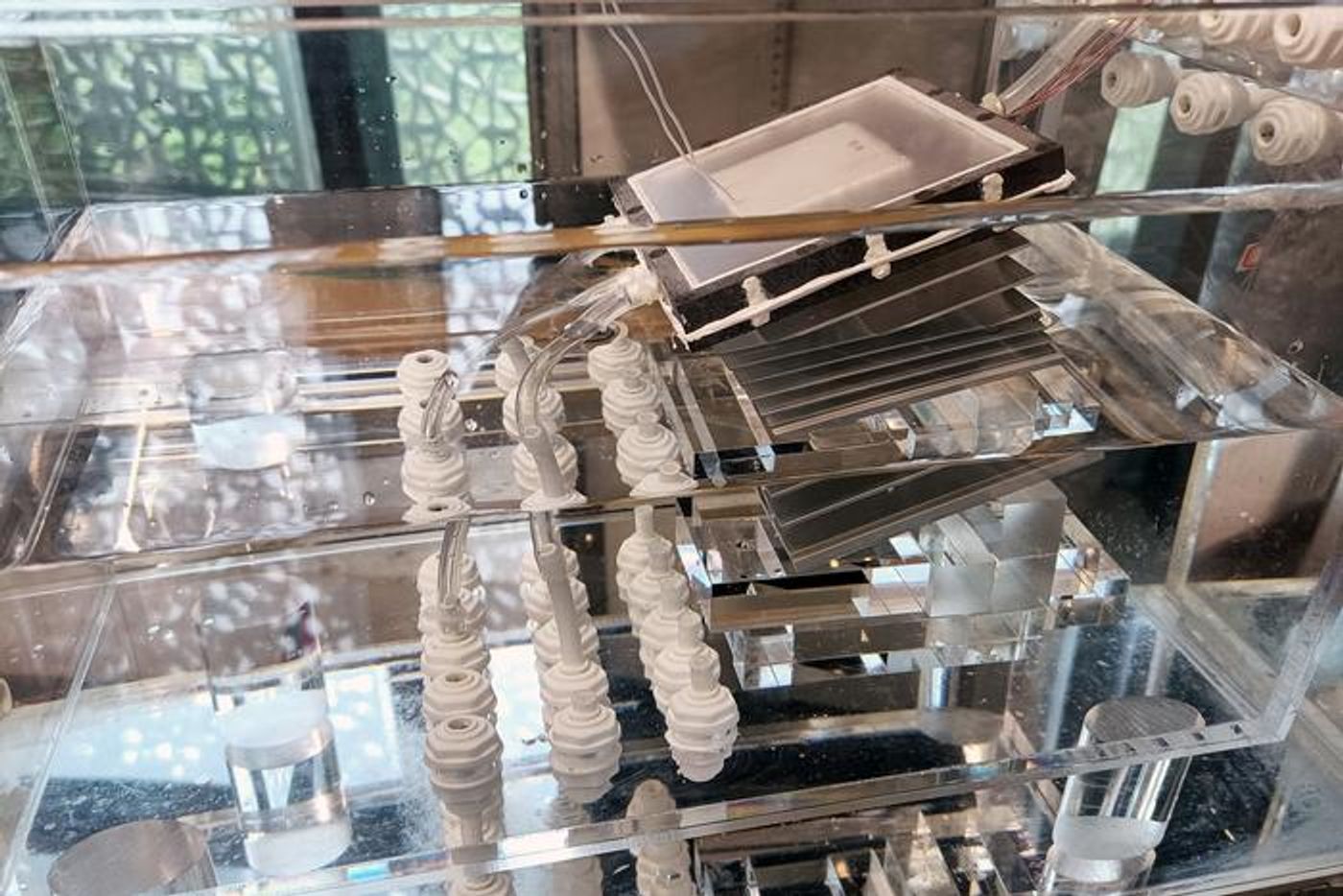Turning Seawater into Drinking Water: A Passive Solar Solution
A recent study published in Joule examines a Sun-powered device capable of converting seawater into drinking water. The device uses a combination of the Sun’s heat and the “thermohaline” circulation patterns of the ocean to evaporate water while leaving salt behind, which is then circulated and dumped out of the system. This study was a collaborative effort between researchers from China and the Massachusetts Institute of Technology (MIT) and holds the potential for improving desalination technologies that could help produce clean drinking water around the world.
“For the first time, it is possible for water, produced by sunlight, to be even cheaper than tap water,” said Dr. Lenan Zhang, who is a research scientist in MIT’s Device Research Laboratory and a co-author on the study.
This research began with a first device that used various stages to produce the drinking water, but it allowed the salt to remain, which the team determined would only increase the long-term costs of the system. In terms of producing drinking water, this first device successfully used its various stages to convert the seawater into drinking water by allowing the Sun’s heat to tamely separate the salt from the water. In a second attempt, the team successfully removed the salt via circulation but found the device performed its desalination at a comparably low rate.
For this most recent device, the team introduced the circulation concept into each stage of the system, which they found not only desalinates at a high rate but also removes a large amount of salt rather quickly, as well. To achieve the circulation within each stage, the team mimics the “thermohaline” behavior of the ocean, with “thermo” meaning temperature and “haline” meaning salinity, or salt content.

The desalination device designed for this study which is capable of producing fresh drinking water while removing salt from the system, which could allow it to operate for several years without replacing parts. (Credit: Jintong Gao and Zhenyuan Xu)
“When seawater is exposed to air, sunlight drives water to evaporate,” said Dr. Zhang. “Once water leaves the surface, salt remains. And the higher the salt concentration, the denser the liquid, and this heavier water wants to flow downward. By mimicking this kilometer-wide phenomena in small box, we can take advantage of this feature to reject salt.”
After testing several prototypes with varying numbers of stages, including one, three, and 10, respectively, the team determined that if each stage was enlarged to one square meter in size, it could desalinate and produce up to 5 liters of clean drinking water per hour, and could accomplished this over the course of several years without building up salt within the system.
Image of a prototype of the device conducting an outdoor test under natural sunlight. (Credit: Jintong Gao and Zhenyuan Xu)
How will this new device help improve desalination technologies in the coming years and decades? Only time will tell, and this is why we science!
As always, keep doing science & keep looking up!
Sources: Joule, National Oceanic and Atmospheric Administration, Wikipedia, EurekAlert!









